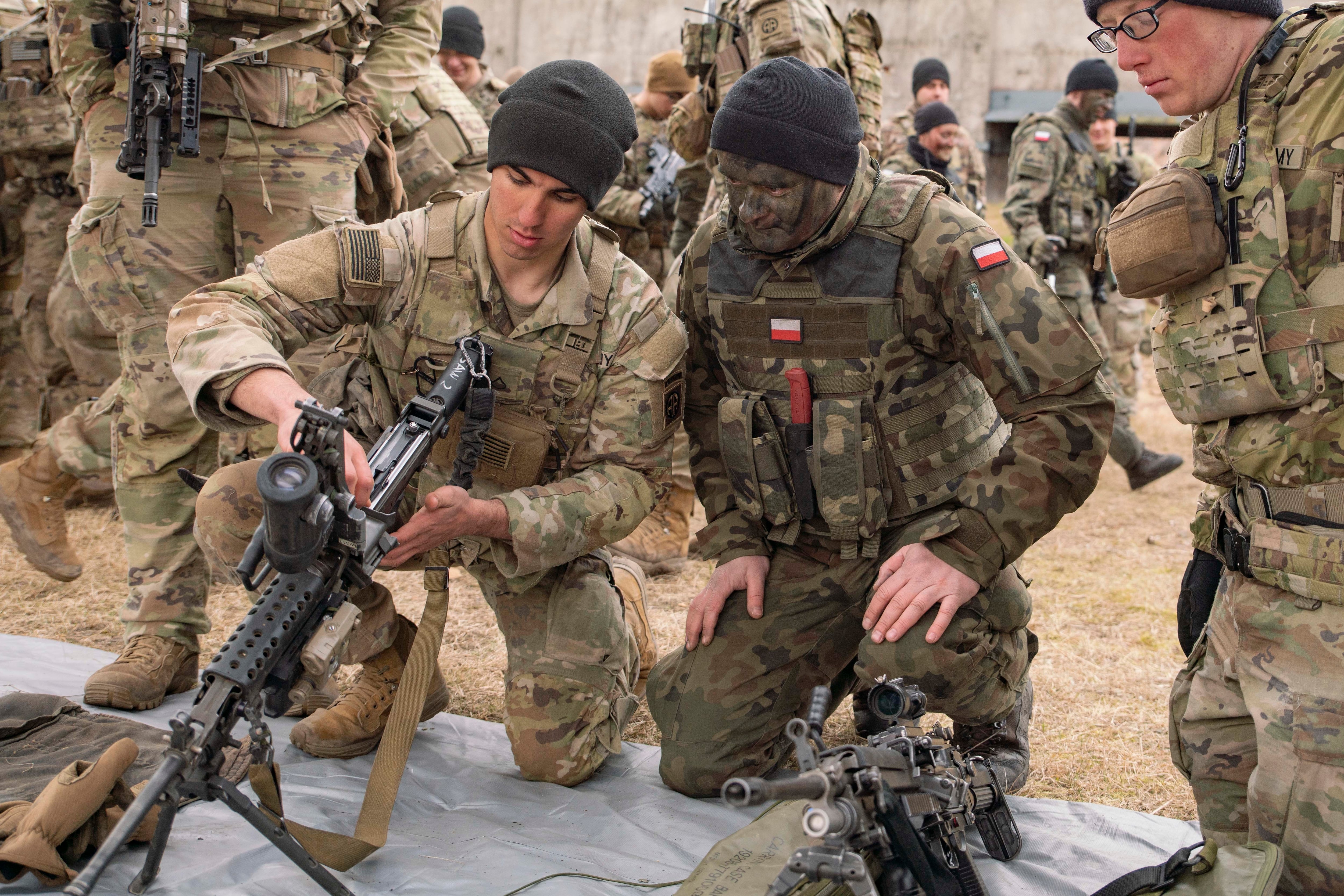Service members would see their largest pay raise in two decades under the fiscal 2023 federal budget plan released by the White House Monday.
The $733 billion spending proposal includes a 4.6% pay raise set to start next January as well as a new basic needs allowance to help military families living near or below the federal poverty line.
But the plan would also shrink active-duty military end strength by thousands of personnel.
In a statement, President Joe Biden called the proposed budget plan “one of the largest investments in our national security in history, with the funds needed to ensure that our military remains the best-prepared, best-trained, best-equipped military in the world.”
RELATED

Lawmakers will spend the next several months debating and dissecting the White House spending outline, likely making numerous changes before a final compromise budget is reached.
But the plan represents a starting point for those debates, and likely the lowest-possible level for personnel items such as the pay raise. In recent years, Congress has either opted to go along with White House recommendations or increase those salaries, not trim back on troops’ compensation.
The last time the military pay raise was above 4.0% was in 2003 (when it was also 4.6%). In January, the raise was at 2.7%, and the figure has hovered around that mark for the past five years.
But soaring inflation rates over the last year led to a rise in civilian sector wages, which in turn led to an increase in the federal formula used to calculate the military pay raise. White House officials called the raise a “modest increase” given the other financial pressures facing military families.
For junior enlisted troops, a 4.6% raise would mean $1,300 more in pay next year, over 2022 levels.
For senior enlisted and junior officers, that hike equals about $2,500 more. An O-4 with 12 years service would see more than $4,500 extra next year under a 4.6% increase.
If the raise is approved by Congress, the average military compensation for officers would rise to $127,100 after including other benefits like housing and food allowances. For enlisted personnel, the figure would grow to $70,200.
Despite that, some junior service members will still remain below the federal poverty line, which sits around $27,000 for a family of four.
Congress in recent years has grown concerned about the financial pressure faced on those most junior troops, and created a new basic needs allowance to help offset those problems.
RELATED

Service leaders are expected to release more details of that program in coming weeks, but White House officials touted the addition in this year’s budget as “taking care of service members” and addressing “economic insecurity” in the ranks.
Even with a 4% increase in overall defense spending, the White House budget calls for an overall reduction in troop numbers.
Under the White House plan, the Army would see its active-duty end strength drop by 12,000 soldiers from the levels approved by Congress earlier this month, to 473,000. The Navy would see a drop of about 600, to 346,300 sailors. The Marine Corps would trim its active-duty end strength by 1,500, going to 177,000 troops.
The Air Force would lose about 6,000 airmen, going to 323,400 personnel. About 200 new guardians would be added under the plan, bringing the Space Force end strength to 8,600.
The new fiscal year begins on Oct. 1, but Congress in recent years has failed to get federal agency budgets finalized by then, forcing the Defense Department to work on short-term budget details for the start of the next fiscal year. Lawmakers have said they hope to avoid that this year.
Leo covers Congress, Veterans Affairs and the White House for Military Times. He has covered Washington, D.C. since 2004, focusing on military personnel and veterans policies. His work has earned numerous honors, including a 2009 Polk award, a 2010 National Headliner Award, the IAVA Leadership in Journalism award and the VFW News Media award.
Meghann Myers is the Pentagon bureau chief at Military Times. She covers operations, policy, personnel, leadership and other issues affecting service members.





